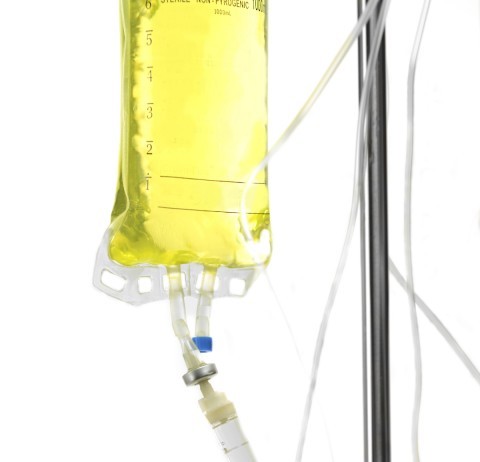Light-Based Therapy for Actinic Keratosis (Part 1)
Actinic Keratosis, or AK, is a common and benign skin problem linked with chronic, long-term sun exposure. The small, rough reddish patches that characterize AK are often referred to as “sun spots”. This condition is usually observed in people over age 50 and occurs primarily in fair-skinned people who have one ore more of the following attributes:
- blond or red hair
- blue, hazel or green eyes
- a tendency to freckle or burn after being in the sun
- a weakened immune system
Around the world, the population most at risk of developing AK is elderly people with European ancestry and a history of spending a great deal of time outdoors. A recent study in Rotterdam (The Netherlands) found that 38% of elderly Dutch people had AK. In other studies, AK was found in 40% of older adults from the United States and in 50-60% of elderly individuals in Australia.
The main concern is that this these individuals will be at greater risk of developing a type of skin cancer called invasive cutaneous squamous cell carcinoma. An estimated 20% of AK cases will eventually develop this disease, which happens to be the second most common form of skin cancer after basal cell carcinoma.
Given the high prevalence of AK in Australia, Europe and North America, it is understandable that so much research would be directed at optimizing treatment strategies. The most popular treatments are cryotherapy and photodynamic therapy (PDT). Cryotherapy employs the freezing of diseased tissue to destroy it. PDT, by contrast, entails the use of a photosensitizing agent and light source to eliminate the abnormal cells.
PDT’s Superior Efficacy for the Treatment of Actinic Keratosis
It has been at least 15 years since the U.S. Food and Drug Administration approved the use of PDT for the treatment of AK. PDT is administered with a topical cream that contains a light-sensitizing compound—the photosensitizer. The classic choices for photosensitizer creams have been either 5-aminolevulinic acid (5-ALA) or its more active version, methyl aminolevulinate (MAL).
In the classic protocol for treating AK, the photosensitizer is applied and kept covered for a specified period of time that will depend on the photosensitizer. For 5-ALA, this timeframe is four to six hours or more, while for MAL it is three hours. After incubation, the target area of skin is exposed to an appropriate source of light. In some cases, the patient may experience pain during the light treatment, and pain-killing medication (analgesics) may be required.
What follows is a brief summary of several recent scientific reports on the use of PDT for AK:
- Dr. Gayatri Patel and her colleagues at the University of California (USA) conducted a systematic review of the evidence comparing PDT to other treatments for AK. In a meta-analysis of four clinical trials that included 641 patients, Patel’s team found that PDT led to a 14% better clearance of AK compared to cryotherapy. Complete clearance three months after treatment was significantly more likely in the 2,170 actinic keratoses treated by PDT compared with 2,174 actinic keratoses treated by cryotherapy. Grade 1 (thin) AK lesions on the face or scalp were 86% more likely to clear within three months after PDT, compared with cryotherapy,as reported online ahead-of-print in the 27 August 2014 issue of JAMA Dermatology.
- A second clinical study out of the Wellman Center for Photomedicine at Harvard Medical School in Boston, Massachusetts (USA) found that warming the skin during incubation of the photosensitizer (the period of time after administering the agent and before light treatment is given) seemed to boost the efficacy of PDT in the treatment of AK on the extremities. Warming the skin could enhance circulation and thus increase the delivery of the photosensitizer to the target tissues. The treatment was well tolerated, as reported online ahead-of-print in the 9 September 2014 issue of Dermatological Surgery.
- In the third report, scientists in Wonju, Korea, showed that PDT not only helped clear the AK, but also had rejuvenating effects on the skin in the course of treatment, as reported online ahead-of-print in the 16 September 2014 issue of Photodermatology, Photoimmunology and Photomedicine. It seems ironic that, while sunlight is thought to accelerate the aging of the skin (a process known as photoaging), light can also be used to reverse this process when combined with a photosensitizer in the proper way. The use of PDT as a way a vehicle for photorejuvenation has become the focus of intensive research attention in the past decade.
Despite these favorable findings, the implementation of PDT can pose several challenges for dermatology clinics. The first challenge, as alluded to above, is that PDT can result in excessive sensitivity of the skin to sunlight (photosensitivity), with painful irritation that sometimes lasts for days or even weeks. Two other challenges are that PDT is more expensive and more time-consuming than cryotherapy as a treatment for AK. These factors have been deterrents to the widespread use of PDT.
On the flip side, with the right treatment approach—that is, selecting the proper photosensitizer, light, dosing schedule, and so forth—PDT can be administered in ways that do not result in photosensitivity. At the same time, the rejuvenating effects of the treatment can make it an attractive option to patients because of the “added value” of the anti-aging effects. Any cosmetic benefit obtained in the course of treatment is bound to be of interest to the ever-expanding aging population.
In Part 2, we’ll look at some of the ways that PDT is evolving and why it may be on track to gain widespread acceptance in the very near future.
Support us by buying our book, The Medicine of Light, and ebooks from our Photoimmune Discoveries eBook Series.
Sources
Lui H. Photodynamic Therapy for Actinic Keratoses: Aren’t We There Yet? JAMA Dermatol. 2014 Aug 27. [Epub ahead of print]
Kim BK, Lee NR, Park SY, Eom M, Choi EH. Efficacy of photodynamic therapy with laser pretreatment for actinic keratosis and photorejuvenation as evaluated by fluorescent imaging. Photodermatol Photoimmunol Photomed. 2014 Sep 16. [Epub ahead of print]
Willey A, Anderson RR, Sakamoto FH. Temperature-Modulated Photodynamic Therapy for the Treatment of Actinic Keratosis on the Extremities: A Pilot Study. Dermatol Surg. 2014 Sep 9. [Epub ahead of print]
Flohil SC, van der Leest RJ, Dowlatshahi EA, Hofman A, de Vries E, Nijsten T. Prevalence of actinic keratosis and its risk factors in the general population: the Rotterdam Study. J Invest Dermatol. 2013;133(8):1971-8.
Patel G, Armstrong AW, Eisen DB. Efficacy of Photodynamic Therapy vs Other Interventions in Randomized Clinical Trials for the Treatment of Actinic Keratoses: A Systematic Review and Meta-analysis. JAMA Dermatol. 2014 Aug 27. [Epub ahead of print]
© Copyright 2014, Photoimmune Discoveries, BV




 English
English Français
Français Deutsch
Deutsch Nederlands
Nederlands